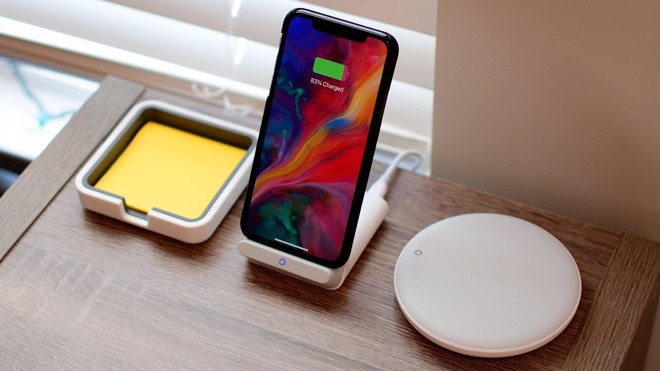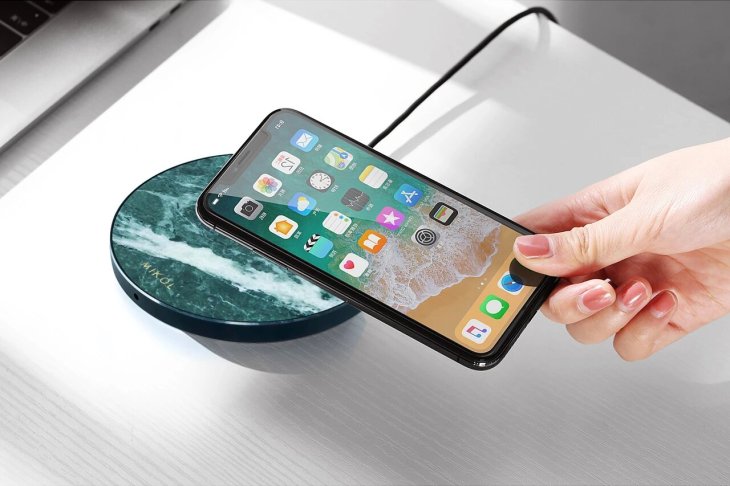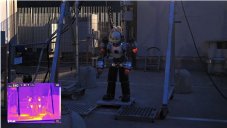Why Are Wireless Chargers Slower Than Wired Chargers?
Anil - Feb 24, 2020

Not only does the excess heat destroy hardware itself but it also leads to battery explosions.
- Xiaomi Announced Technology That Wirelessly Charges Many Devices Around Your House
- Apple Launches MagSafe Wireless Charging Dock, Only Compatible With iPhone 12
- This Robot Is Capable Of Wireless Charging Over A Distance
Smartphone manufacturers have already come up with an amazing idea that aims to change the way we charge our devices: Making wireless chargers. However, wireless chargers are said to be so slow, according to reviews from both tech insiders and users. Once you've intended to buy a new smartphone along with a wireless charger, here’s what you should learn if you don't want to regret buying an unexpected device.

How A Wireless Charger Works
Wireless chargers typically use magnetic resonance and induction to send electric power to the phone. In other words, a wireless charger will extract electricity from a power outlet and create a magnetic field. An inbuilt system inside the phone then kicks off the availability of an electrical current to charge its battery.

Wireless Chargers Could Fry Your Phone If They Charge Faster
Now, it’s time to find out why wireless chargers couldn’t be faster. In fact, they are capable of doing a really, really quick charge instead of wiping a lot of time. Unfortunately, today’s hardware isn’t qualified enough to complete a safe charge at high speeds as it makes the wireless charger generate too much heat. Not only does the excess heat destroy hardware itself but it also leads to battery explosions. According to a study, wireless chargers consume about 30% to 70% of the power they’ve received for nothing.

Put it aside, manufacturers still have to face a reservoir of challenges and limitations if they want to develop wireless chargers in accordance with user needs. Precision is a telling example. Some types of chargers are unable to work whenever the user has a piece of metal such as coins or keys nearby the charging surface.

Technically speaking, the safety measure doesn’t allow intense magnetic fields to heat up such a metal object – so, either algorithms or distance limitations should be developed as soon as possible for better detection.
Featured Stories

ICT News - Jul 05, 2025
Windows 11 is Now the Most Popular Desktop OS in the World

ICT News - Jul 02, 2025
All About Florida’s Alligator Alcatraz: A Smart Move for Immigration Control

ICT News - Jun 25, 2025
AI Intimidation Tactics: CEOs Turn Flawed Technology Into Employee Fear Machine

ICT News - Jun 24, 2025
Tesla Robotaxi Finally Hits the Streets: $4.20 Rides That'll Make You Hold Your...

ICT News - Jun 24, 2025
World's First Flying Humanoid Robot Takes Flight

ICT News - Jun 24, 2025
When Closed Source Met Open Source: Bill Gates Finally Meets Linus Torvalds After...

Gadgets - Jun 23, 2025
COLORFUL SMART 900 AI Mini PC: Compact Power for Content Creation

ICT News - Jun 22, 2025
Neuralink Telepathy Chip Enables Quadriplegic Rob Greiner to Control Games with...

ICT News - Jun 20, 2025
Tesla vs Zoox vs Waymo: Who would win?

ICT News - Jun 19, 2025
Comments
Sort by Newest | Popular